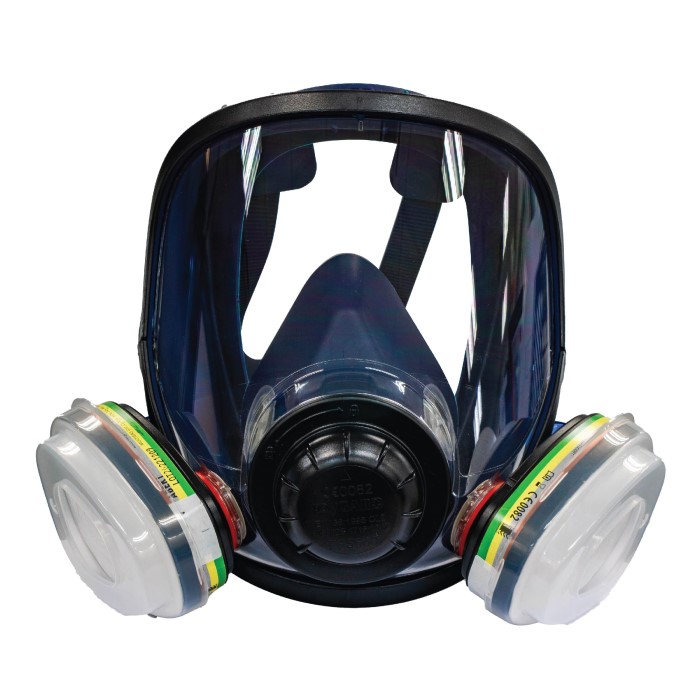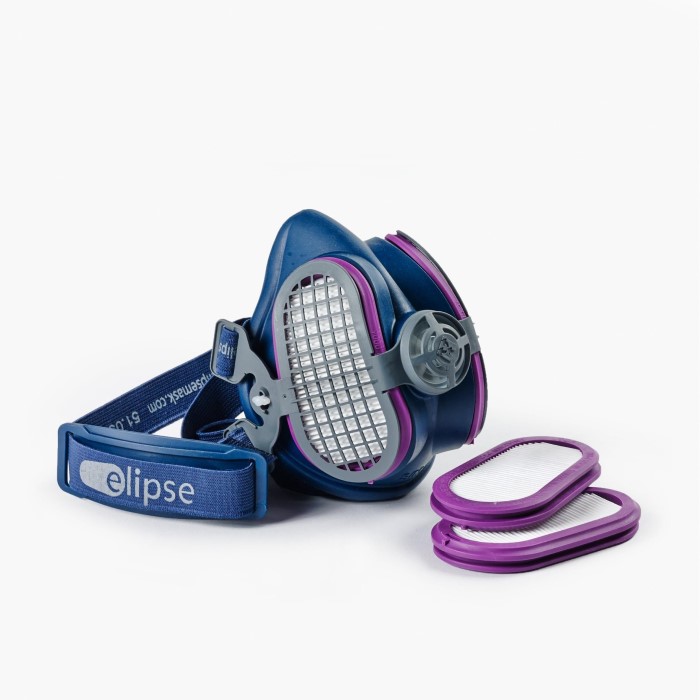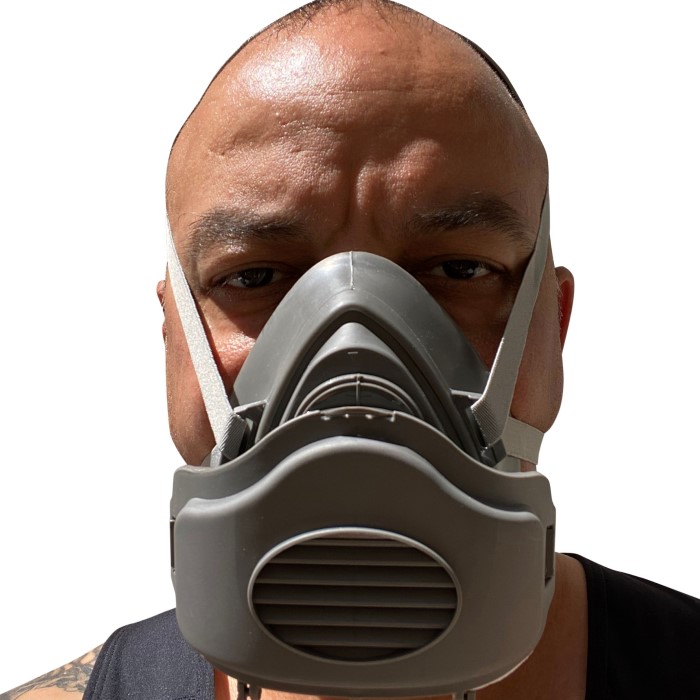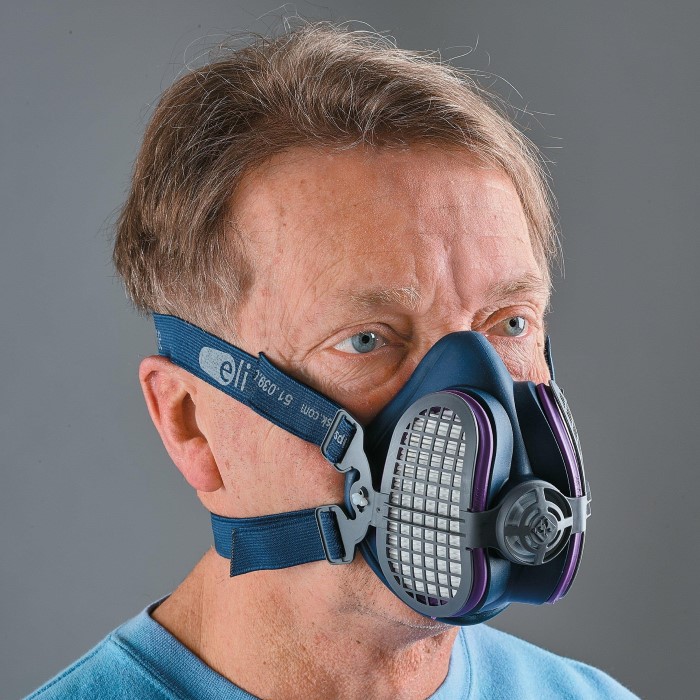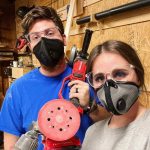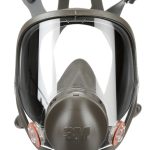Introduction
Woodworking is a fulfilling and creative endeavor, but it also presents health risks that are often underestimated. Among these risks, exposure to wood dust stands out as a significant concern. As you work with various materials, fine particles can become airborne, leading to potential respiratory issues. Therefore, using a dust mask respirator is not just advisable—it’s essential. This article discusses the importance of wearing a dust mask respirator while woodworking, delves into the different types available, and provides guidance on selecting the best option for your needs in 2025.

Why Wood Dust is Hazardous
When working with wood, sawdust and fine particles are produced, especially during cutting and sanding tasks. Inhalation of wood dust can cause immediate and long-term health problems. Studies have connected wood dust exposure to respiratory issues, including asthma, chronic bronchitis, and lung cancer.
Health Risks of Wood Dust Exposure
Respiratory Problems
- Irritation of the Respiratory Tract: Short-term exposure to wood dust can lead to immediate irritation of the respiratory system. Symptoms often include a persistent cough and difficulty breathing. This irritation arises as fine dust particles enter the nasal passages and throat, causing inflammation.
- Acute Effects: Initially, individuals may experience acute symptoms that resemble allergies or a common cold. This includes a sore throat, watery eyes, and coughing. Such symptoms can be particularly troublesome for those with pre-existing respiratory conditions or sensitivities.
- Long-Term Risks: Prolonged exposure to wood dust significantly heightens the risk of developing chronic respiratory illnesses. These may include chronic obstructive pulmonary disease (COPD) and persistent asthma. Over time, inflammation can lead to irreversible lung damage, affecting overall lung function and quality of life.
- Heightened Risk for Vulnerable Populations: Individuals with existing respiratory conditions or those who smoke may be at greater risk. Their respiratory systems may already be compromised, making them more susceptible to the harmful effects of wood dust.
Allergic Reactions
- Types of Wood and Allergens: Many types of wood, such as cedar and oak, are known to trigger allergic reactions in susceptible individuals. These reactions are often due to specific proteins or chemicals released by the wood when cut or sanded.
- Symptoms of Allergic Reactions: Common allergic responses include sneezing, runny noses, and itchy, watery eyes. Skin irritation or rashes may also occur, particularly if wood dust comes into contact with bare skin.
- Severity with Repeated Exposure: Repeated exposure to these allergens can lead to more severe reactions over time. Individuals may notice an increase in the intensity of symptoms, possibly developing more chronic forms of allergies, such as allergic rhinitis.
- Impact on Daily Life: Allergic reactions can impede daily activities, reducing overall productivity and quality of life. Woodworkers may find it challenging to work for extended periods without experiencing discomfort, which can lead to job dissatisfaction.
Carcinogenic Effects
- Classification of Certain Woods: Some wood species, especially certain hardwoods like mahogany and oak, have been classified as potential carcinogens by health organizations. This classification is due to the toxic compounds and fine particles released during the cutting and sanding processes.
- Mechanism of Carcinogenicity: Prolonged inhalation of these wood dust particles can lead to cellular changes in the lungs, setting the stage for the development of cancer over time. Studies indicate that woodworkers face a higher risk of nasopharyngeal and lung cancers.
- Long-Term Risks: The increased risk of serious conditions, including various types of cancer, is concerning for those in the woodworking industry, especially if safety precautions are not observed. Regular exposure without adequate protective measures can have life-altering consequences.
- Awareness and Precaution: Understanding the carcinogenic potential of certain woods underscores the importance of using proper safety equipment, such as masks and respirators, while working with these materials to minimize exposure.
Emotional and Mental Health
- Chronic Illness and Psychological Impact: Chronic respiratory problems linked to wood dust exposure can have far-reaching effects beyond physical health. Individuals dealing with ongoing health issues may experience increased stress and anxiety.
- Constant Health Worries: Living with chronic respiratory illnesses can lead to a heightened sense of vulnerability. Individuals may constantly worry about their health, leading to an ongoing cycle of anxiety and concern about future complications.
- Limitations on Activities: Chronic conditions can impose restrictions on daily activities and hobbies, resulting in feelings of frustration and helplessness. Woodworkers may feel limited in their ability to engage in their craft fully, leading to loss of satisfaction and fulfillment.
- Need for Support: It is essential for individuals experiencing these emotional and mental challenges to seek support from healthcare providers, mental health professionals, or support groups. Addressing both physical and mental health can lead to a more balanced and fulfilling life despite the challenges posed by wood dust exposure.
Types of Dust Masks and Respirators
Choosing the right type of dust mask respirator is critical for your safety. Let’s explore the options your choice should involve:
N95 Respirators
N95 respirators are widely used in various applications, including woodworking. They are designed to filter at least 95% of airborne particles, effectively preventing most dust from entering the lungs. However, while they are great for general use, they may not protect against smaller particles or certain toxic substances. Therefore, understanding your specific needs in woodworking is crucial when selecting a mask.
- Features: Lightweight, disposable, and designed for optimal fit.
- Limitations: Not suitable for all toxic substances and not effective against fine dusts.
P100 Masks
For those frequently exposed to fine wood dust, a P100 mask is a better option. This type of respirator filters out 99.97% of airborne particles. While more expensive, the increased filtration efficiency makes it a worthwhile investment for professionals and serious hobbyists alike.
- Features: High filtration efficiency, reusable, and suitable for long-term exposure.
- Best for: Users working with more hazardous materials or in environments with extensive particulate matter.
FFP2 and FFP3 Masks
In Europe, FFP2 and FFP3 masks are common choices for respiratory protection. FFP2 masks filter at least 94% of airborne particles, while FFP3 masks filter at least 99%. Depending on the nature of your woodworking projects, opting for an FFP3 respirator may provide you with better protection against hazardous dust.
- Regulations: These masks comply with European standards and offer specific protection levels.
- Applicability: Ideal for woodworkers and others requiring precision filtration.
How to Choose the Right Dust Mask Respirator
Choosing the right dust mask respirator involves considering several factors:
- Filtration Efficiency: Always opt for masks that provide adequate filtration based on your specific woodworking tasks. For heavy dust exposure, a P100 or FFP3 mask is advisable.
- Fit and Comfort: A mask that does not fit properly can allow dust to enter. Ensure the mask creates a snug seal against your face. Many brands offer adjustable straps for a better fit.
- Type of Work: If you often work with fine woods or have allergies, select a respirator designed for higher filtration.
- Maintenance: Consider whether you want a disposable or reusable mask. Disposable masks provide convenience, while reusable ones may save money in the long term.
- User Reviews and Recommendations: Read reviews and ask fellow woodworkers which products they recommend. User feedback can provide valuable insights.
- Regulatory Compliance: Ensure that the chosen mask meets local health and safety regulations. This is particularly important for professionals working in commercial settings.
Proper Usage
Wearing your dust mask respirator correctly is crucial for its effectiveness. Here are some steps to ensure proper usage:
- Inspect Before Use: Always check the mask for any signs of wear or damage. A compromised seal can allow dust to bypass filtration.
- Clean Hands: Before putting on the mask, wash your hands to avoid transferring any contaminants.
- Secure Fit: Position the mask snugly over your mouth and nose. Ensure it sits tightly to prevent air leaks.
- Avoid Touching: Once the mask is on, avoid touching your face or the mask. This can compromise its integrity and effectiveness.
- Storage: After use, store the mask in a clean, dry place. Proper storage minimizes the risk of contamination.
- Replacement Guidance: Follow manufacturer guidelines on when to replace your mask. Regularly replace filters if using a disposable mask and watch for signs of wear on reusable versions.
FAQ Section
What is the difference between a dust mask and a respirator?
A dust mask is primarily designed for filtering larger particulate matter and is often less effective than respirators. A respirator, especially N95 or P100, provides better filtration and is designed for more hazardous environments.
What respirator is used for dust?
For woodworking, N95 and P100 respirators are commonly used to filter wood dust effectively. P100 masks offer superior protection against fine particles.
Is FFP2 or FFP3 better for dust?
FFP3 masks offer better protection than FFP2 masks, filtering at least 99% of airborne particles. If working with hazardous or fine wood dust, opting for FFP3 is advisable.
Is a N95 dust mask a respirator?
Yes, an N95 dust mask is classified as a respirator. It is designed to filter out 95% of airborne particles but may not be sufficient for all types of dust exposure.
Conclusion: Prioritize Your Safety with the Right Dust Mask Respirator
In summary, wearing a dust mask respirator is crucial for anyone engaged in woodworking. The protective qualities of a suitable respirator can help prevent serious health issues caused by wood dust exposure. By choosing the right type of mask, ensuring proper usage, and maintaining it correctly, you can enjoy your woodworking projects with the peace of mind that comes with effective respiratory protection.
With 2025 upon us, investing in reliable safety gear is more important than ever. Protecting your lungs not only ensures your health but also allows you to continue enjoying your craft for years to come. Equip yourself with a suitable dust mask respirator today and embrace your woodworking passion safely!
Final Thoughts
Regardless of the woodworking projects you’re involved in, prioritizing respiratory health is non-negotiable. The effects of prolonged wood dust exposure can lead to debilitating health conditions, and you cannot afford to take chances. By understanding the various masks available and following recommended usage guidelines, you can create a safer work environment. In the end, your health is your most valuable asset; protect it wisely with the right dust mask respirator. Happy woodworking!
